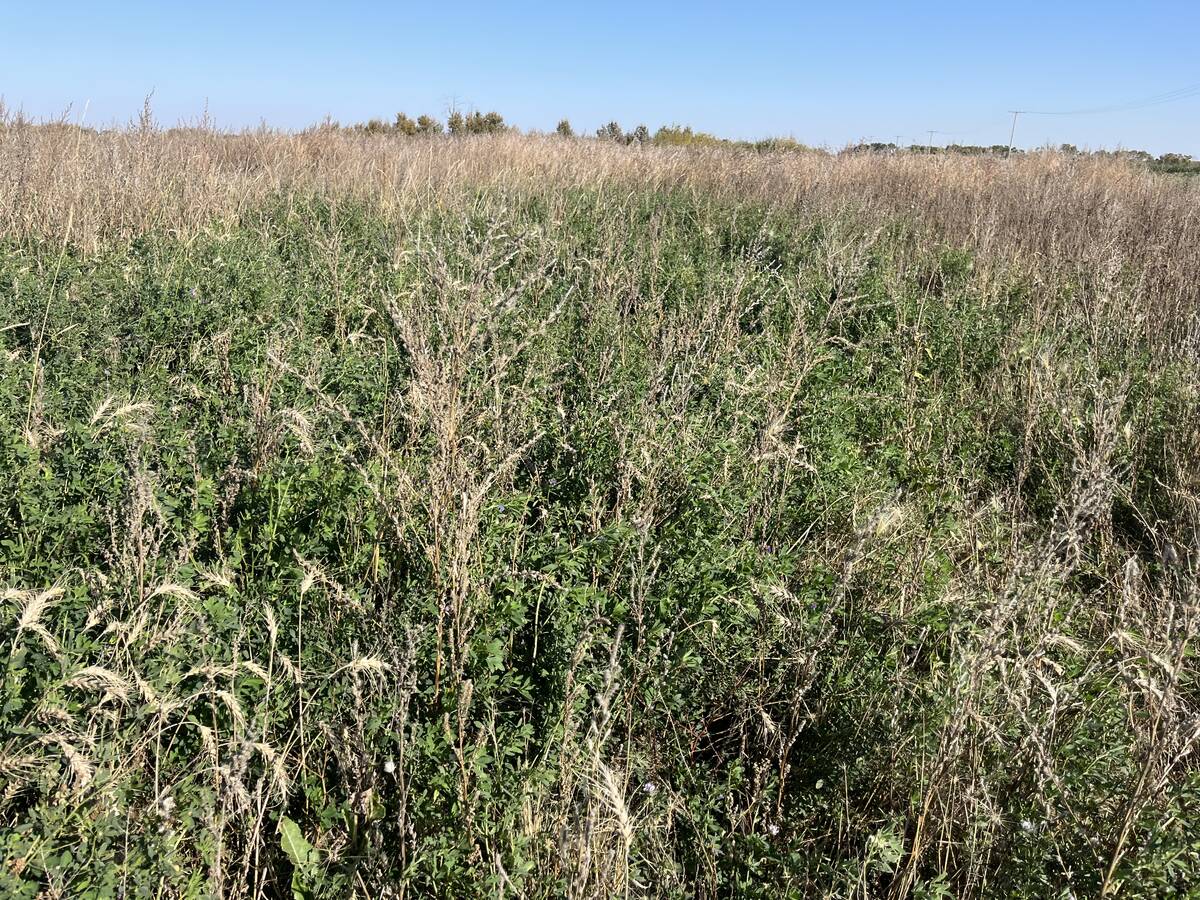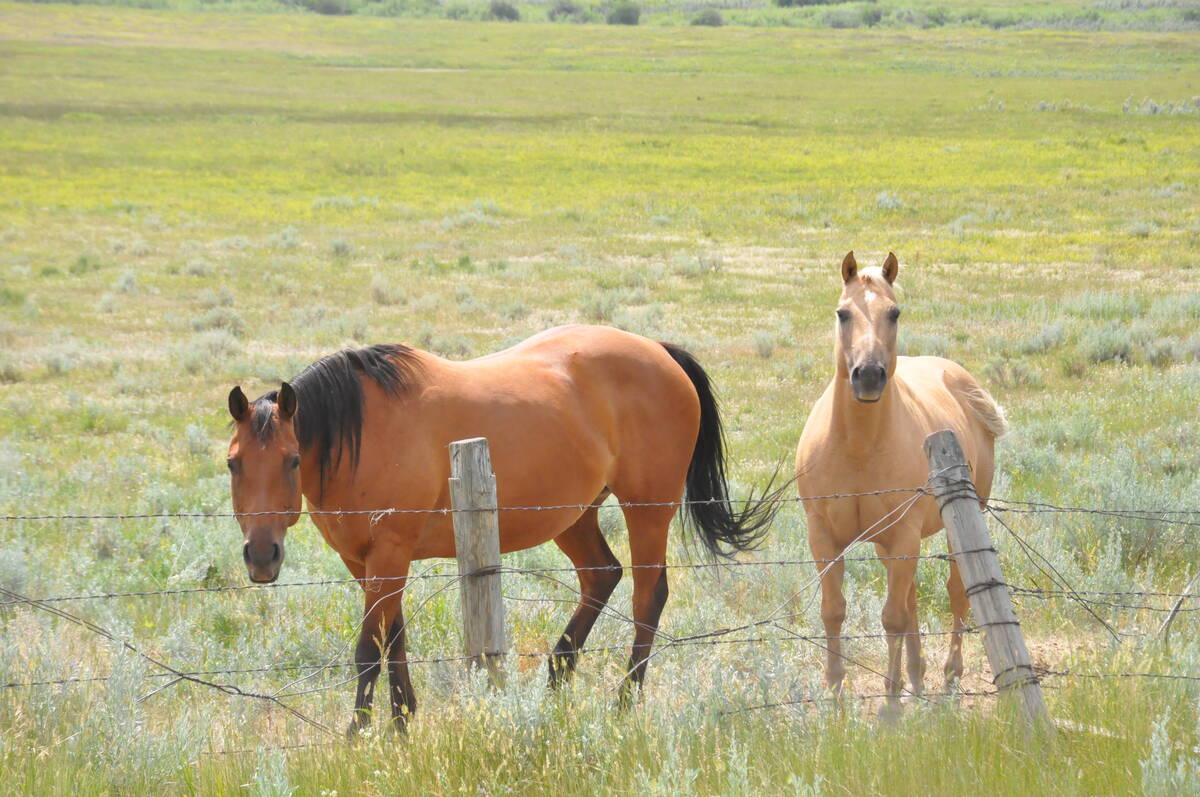While hoof wall cracks might not always cause lameness, they are seldom purely cosmetic and often point to underlying health concerns that deserve closer attention.
They are outward signs of internal and structural imbalances, including mechanical stress, nutritional deficiencies and the often-overlooked burden of excess weight.
The hoof capsule is a dynamic, weight-bearing structure that expands and contracts with every step. When its form or integrity is compromised, repeated stress can lead to micro-fractures that evolve into visible cracks.
Read Also

Dormant seeding forages frees up farmer time and gets ahead of weeds
Dormant seeding isn’t common practice and can appear daunting, but there are some techniques to give Manitoba farmers an edge
These often begin at high-strain areas like the toe or quarters, where uneven loading causes the horn tubules to split apart vertically.
Mechanical imbalances such as long toes, under-run heels, overgrowth or flares distort break-over and load distribution, creating the conditions for leverage and cracking to occur.
Imbalanced trimming or shoeing, along with poor hoof conformation, whether inherited or acquired, can disrupt proper weight distribution during loading, also contributing to the formation of cracks.
If the underlying imbalance isn’t addressed, these cracks can become chronic, widening over time or even leading to infection.
Therefore routine hoof care is essential for preventing and minimizing hoof cracks.
A knowledgeable trimmer or farrier focused on functional balance, rather than just aesthetics, is key. Addressing long-standing cracks may require growing out a completely new hoof, which demands time, consistency, and patience.
Mechanical stress alone does not account for all hoof cracks, nor does it explain why some hoofs are more prone to cracking than others.
The horse’s nutritional status, especially the health of its digestive system, also plays a significant role.
The hoof wall is primarily made of keratin and glue-like substances that need a steady supply of amino acids, minerals, vitamins and omega-3 fatty acids for proper synthesis and repair.
When nutrition is imbalanced or digestion is compromised, the hoof loses its strength and flexibility, becoming brittle or soft and more susceptible to cracking under mechanical stress.
Biotin is often promoted as a key supplement for improving hoof quality, and while many horse owners see improvement with supplementation, it’s important to consider why it might be needed in the first place.
Think of biotin as the project manager of hoof wall construction — not the bricks or the mortar but the one making sure the right materials, such as keratin and lipids, are produced and assembled properly.
Without biotin, the structure may still form, but it’s weaker, disorganized and prone to breakdown.
That’s why, when cracked hoofs respond to biotin supplementation, what we’re really seeing is improved organization and quality of the hoof wall structure.
With enough biotin, the ‘project manager’ can oversee better keratin production and proper lipid integration, leading to stronger, more resilient hoofs that hold together under stress.
In a healthy horse, biotin is naturally synthesized in the hindgut by beneficial microbes.
However, when gut health is compromised due to high-sugar diets, processed feeds, sudden dietary changes or chronic inflammation, these microbial populations struggle, leading to reduced biotin production.
This not only lowers biotin levels but also triggers inflammation that weakens the laminae, the tissue that anchors the hoof wall to the underlying bone. Over time, this can result in brittle walls, flaring and cracks.
One of the most common and damaging factors that disrupt digestion is a high intake of non-structural carbohydrates (NSC), such as sugars, starches and fructans.
Rich pastures, spring flushes and sugary feeds can trigger gut dysbiosis and systemic inflammation.
This metabolic imbalance weakens the integrity of the laminae, compromising hoof quality and increasing the risk of white line separation, which creates an entry point for opportunistic fungi and bacteria, contributing to white line disease.
Once inside, these microbes degrade the inner hoof wall, undermining the support behind the outer wall and making it more vulnerable to cracks and flares, especially when mechanical stress is added.
Beyond biotin, nutrients such as calcium, phosphorus, magnesium, zinc, copper, sulphur, selenium, omega-3s and amino acids are vital for hoof integrity.
However, even the best diet can’t support hoof health if the digestive system is compromised. Hindgut acidosis from excess sugars disrupts nutrient absorption, often leading to poor hoof quality despite a seemingly balanced diet.
Obesity silently compounds stress on the hoof, both metabolically and mechanically.
Excess weight increases physical strain, making existing cracks from weak keratin or poor mechanics worse and slower to heal.
Overweight horses are also more likely to have insulin dys-regulation and systemic inflammation, creating a cycle of excessive sugar intake, poor hoof quality, cracks under load and delayed recovery.
When hoof cracks appear, our instinct is often to look down, at the foot itself, for the cause and the fix, yet the true origins of hoof integrity lie much deeper, beginning in the gut.
A horse’s ability to digest and absorb nutrients, especially those that build keratin and connective tissue, directly influences hoof strength and resilience.
Managing sugar intake is one of the most powerful ways to support both digestive and hoof health from the inside out.
A healthy gut lays the foundation for strong hoofs, while its imbalances can silently weaken hoof structure long before cracks appear.
Carol Shwetz is a veterinarian focusing on equine practice in Millarville, Alta.















